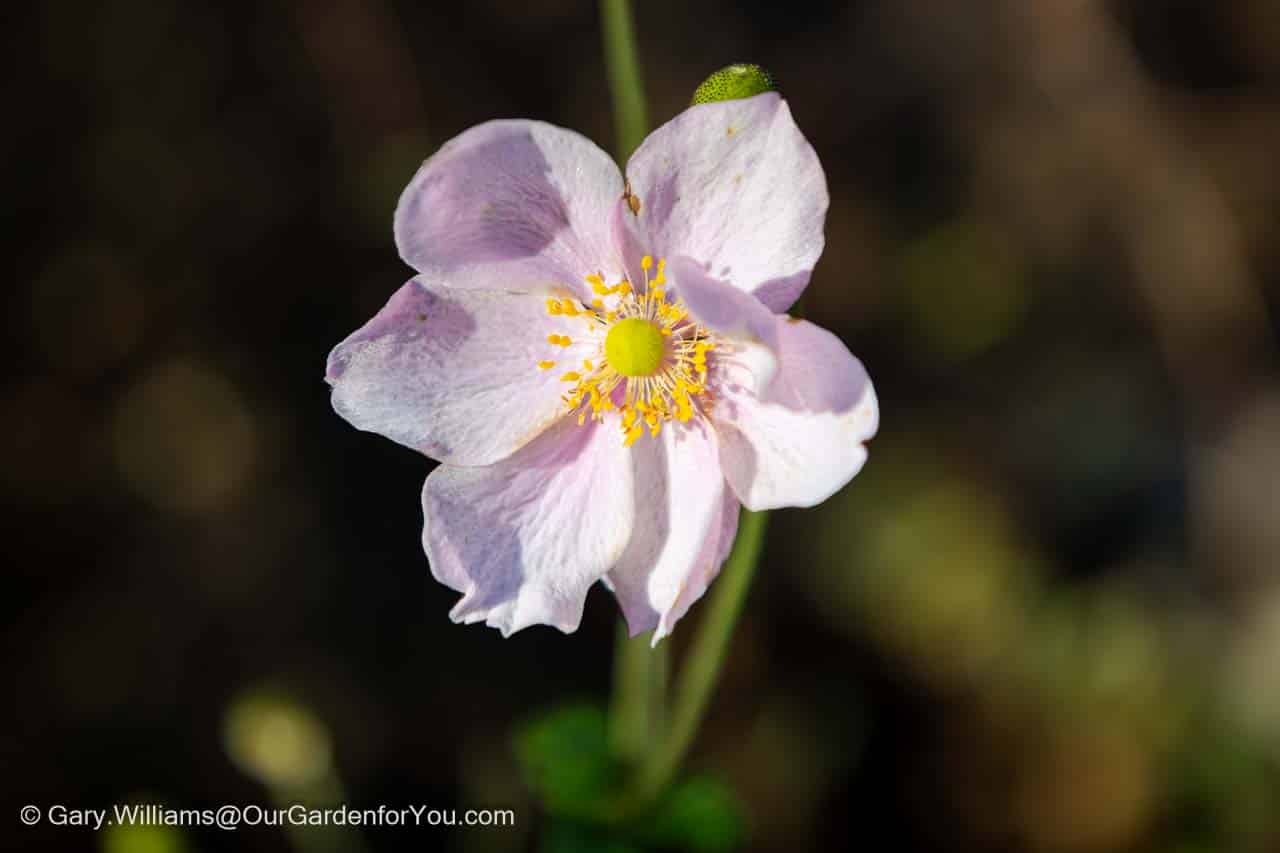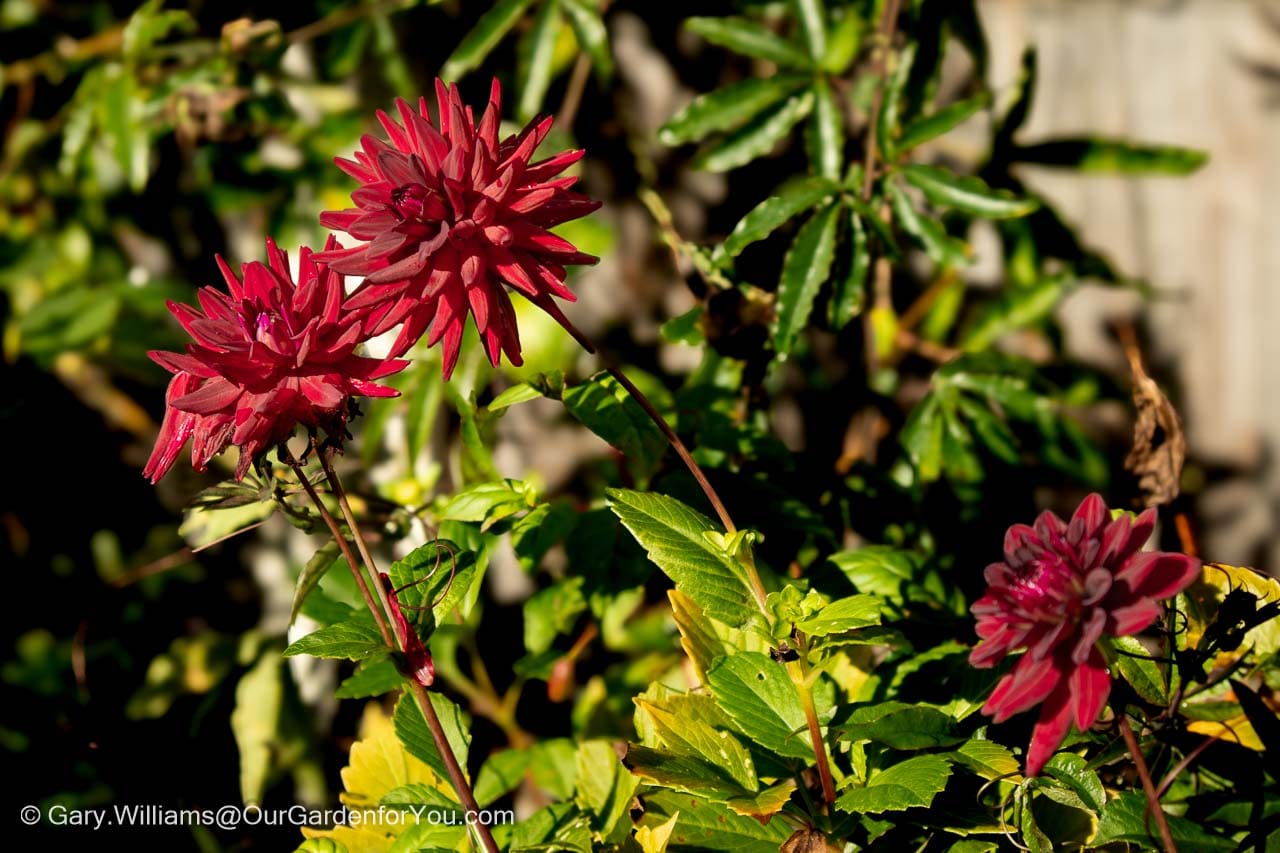Creating a swathe of colour
In 2021 Gary and I became National Trust members and couldn’t wait to venture out and about to discover the National Trust sites within the southeast region of the UK.
One of the first sites we visited last September was Sissinghurst Castle Garden in Kent, which was beautiful. The planting throughout the blooming gardens and borders was exquisite. It appeared so effortlessly planted; however, you know that the National Trust gardening team would have been meticulous as to where each and every flower would go.
We knew we wanted to return in spring to enjoy the gardens in a different season, so we visited again in late May
Pinterest?
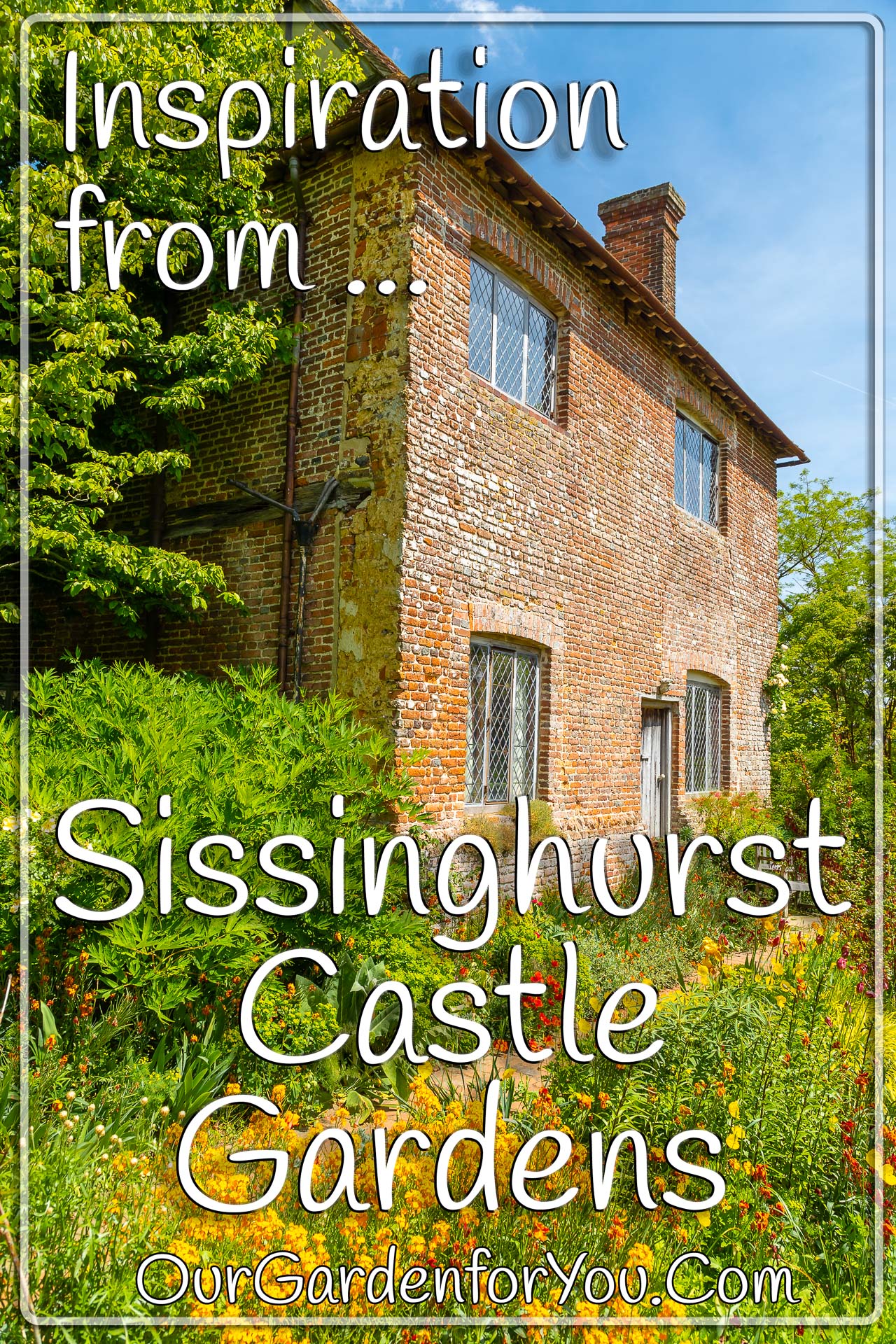
A little background on Sissinghurst Castle Garden
An inspiration from Vita Sackville-WestFirstly, Sissinghurst Castle has never truly been a castle. During the Saxon period, there was a small, moated manor house on the land, and only the moat remained.
In the 16th century, the wealthy Baker family erected a grand Renaissance courtyard manor. The main survivor from this era is the eye-catching redbrick Tudor Towers that would have once been a stunning entrance to the courtyards at its feet. Still standing are some of the ancient walls that now create Sissinghurst Castle’s enchanting walled gardens.
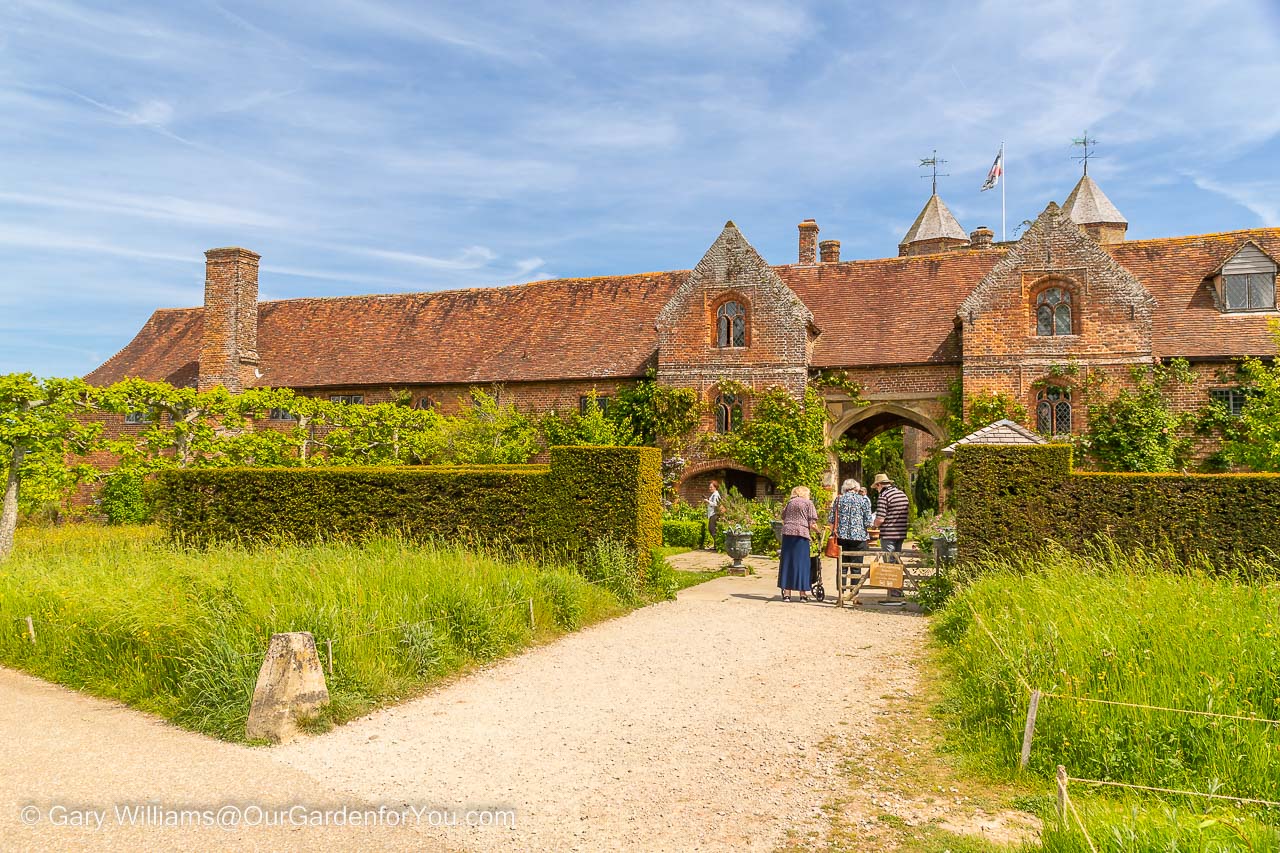
Skipping forward to the 1930s, Sissinghurst Castle Garden was purchased by the creative English author Vita Sackville-West and her husband, Harold Nicolson.
The couple immediately fell in love with the surroundings and instantly started to transform the uncherished gardens and renovated the few remaining historic buildings into their family home.
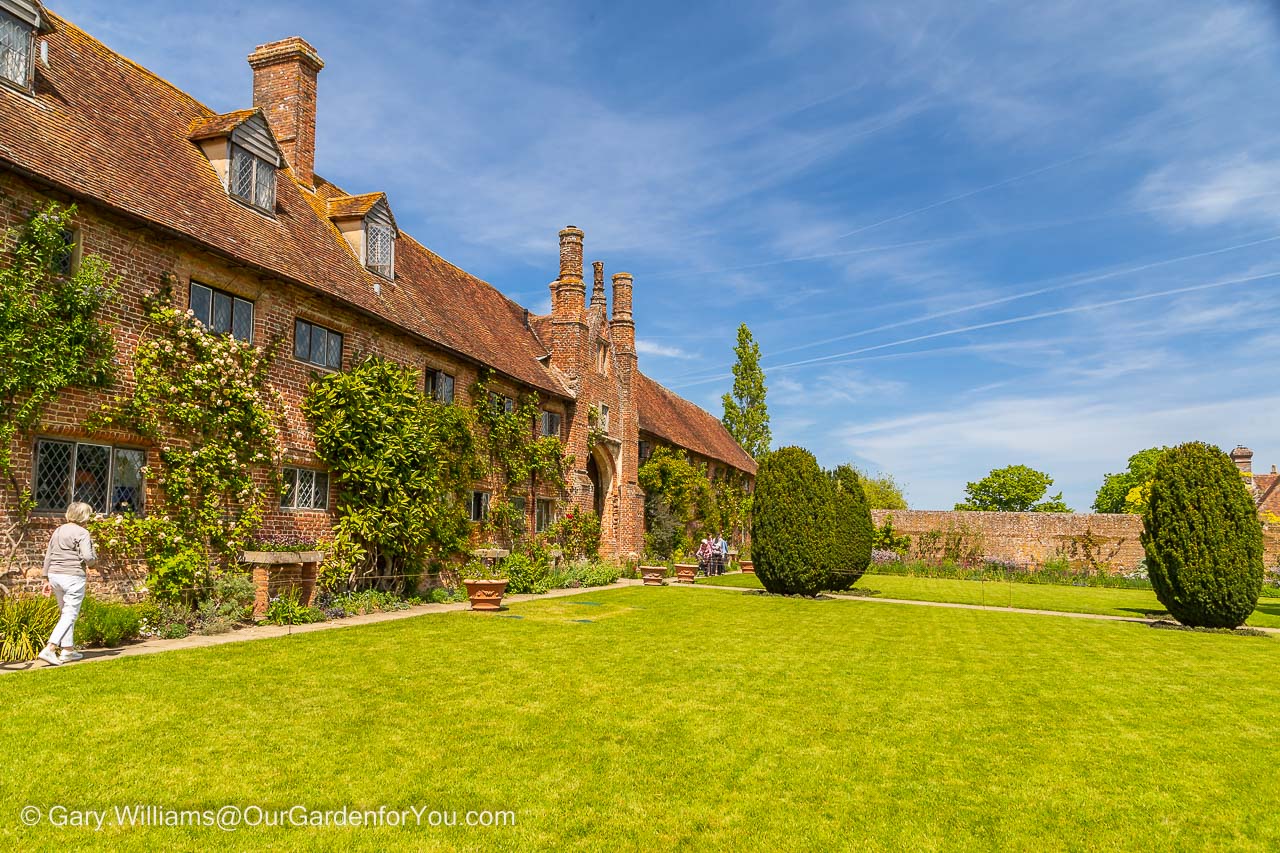
Vita died in 1962, and in 1967 Harold decided to hand over their beloved Sissinghurst into the nurturing hands of the National Trust.
I would be incredibly happy if I could bring a slight inspirational nod to Sissinghurst into our English cottage garden.
Arriving at Sissinghurst Castle Garden
From oast houses to NarniaArriving at Sissinghurst Castle Garden, you’ll immediately spot the delightful Kentish oast houses, which are always a treat to see across the county. However, my eyes are firmly set on exploring the enchanting gardens beyond.
You reach the garden entrance, and you’re greeted with delicate rambling roses clinging to the ancient brick façade, and you’re instantly drawn through the old wooden doorway to discover what lies behind.
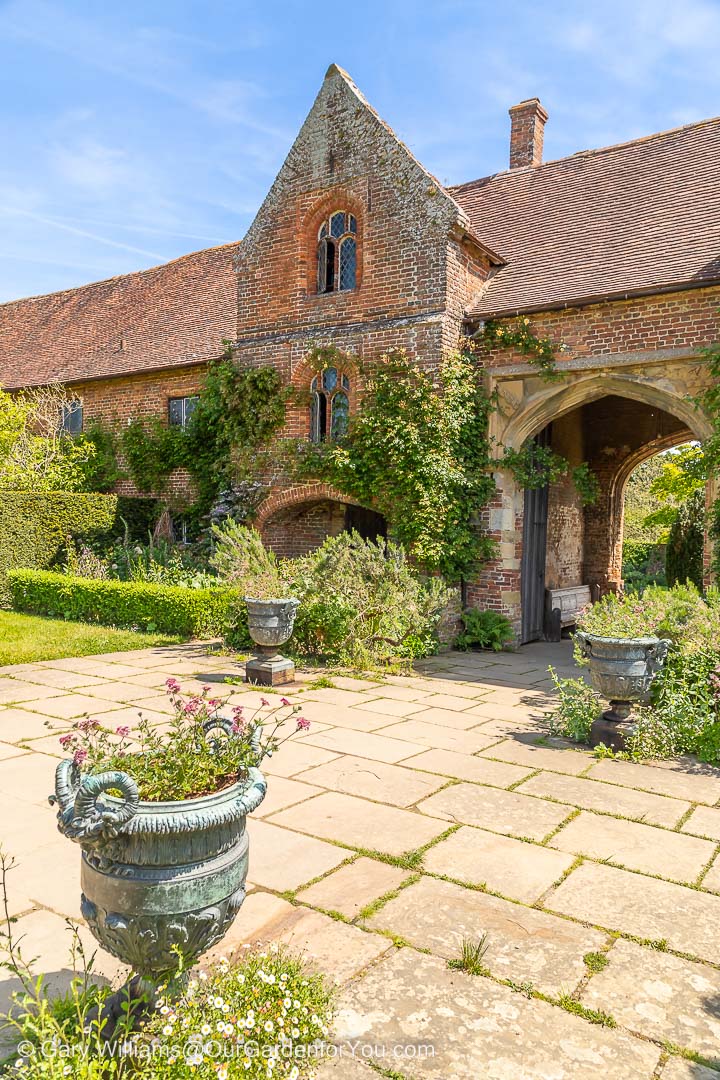
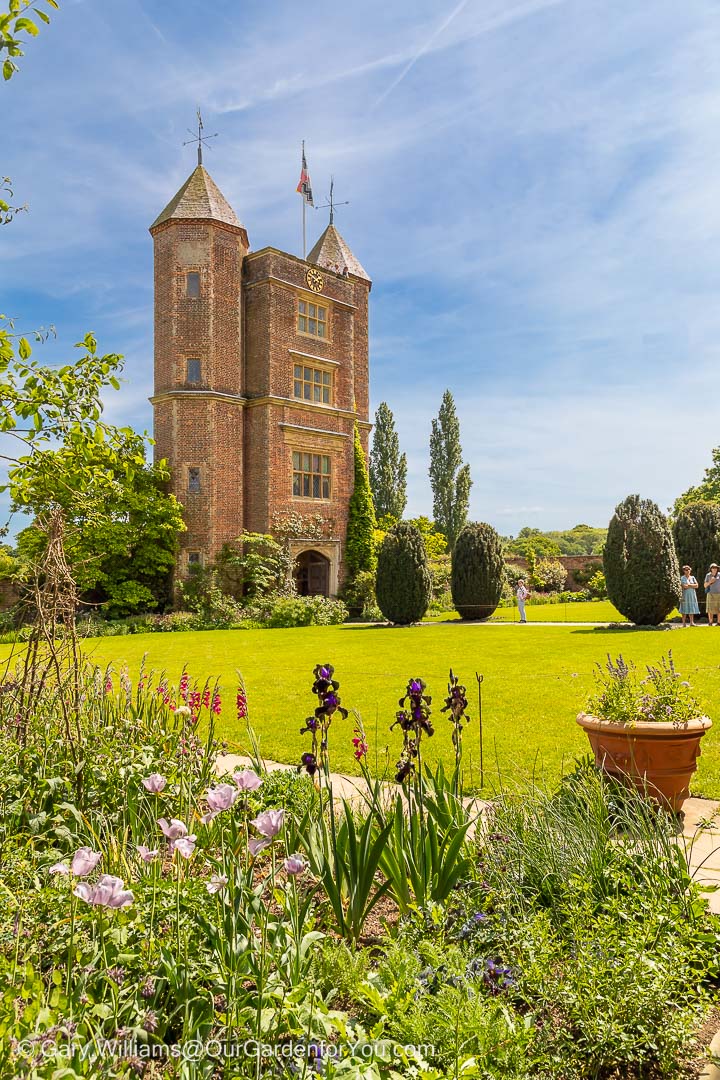
You’ll not be disappointed as you feel like you’ve entered Narnia when you see the breath-taking towers and the enchanting gardens encircling you within the top courtyard.
As we’re looking for inspiration for our own garden, I can’t stop making notes of the plants that caught my eye. Helpfully, the National Trust has supplied little labels for most plants. Although I have now started using the ‘PlantNet’ app to identify plants, you must download it if you haven’t already. It is so useful.
To Sissinghurst Castle Tower we go
Admiring the enchanting gardens from above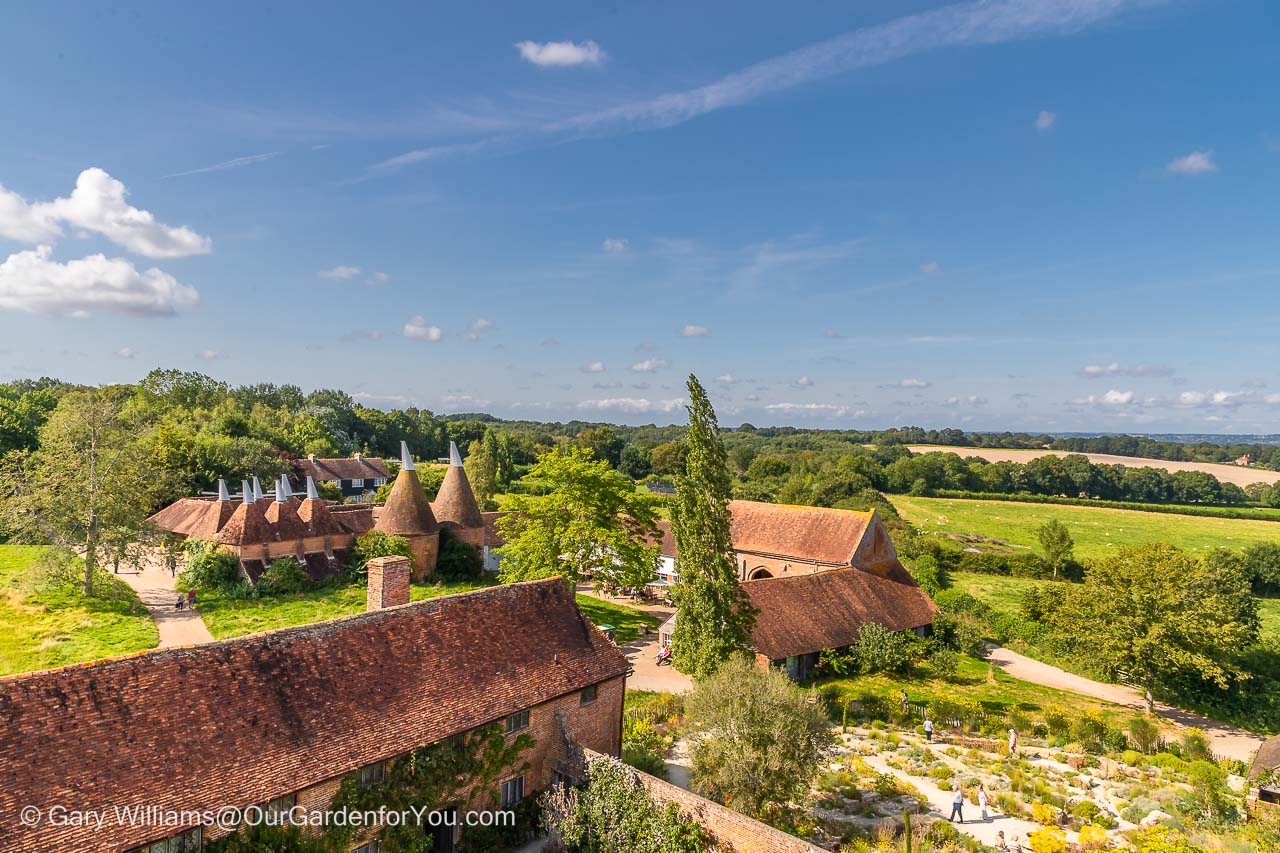
The views are magnificent across the surrounding countryside, and you’ll also get a birds-eye view of the dream-like gardens below.
You’ll see how each individual garden effortlessly blends in with one another and appreciate how much time and effort has gone into the planning of Sissinghurst.
Exploring the Rose Garden
Full of endless pleasureThe first enchanting wooden gate we strolled through was to the Rose Garden.
There was so much inspiration for me to gain within the Rose Garden, and it wasn’t just roses. The gorgeous blends of colour and texture gently swaying in the breeze were enchanting. The borders were overflowing with soothing perennials in all shapes and sizes.
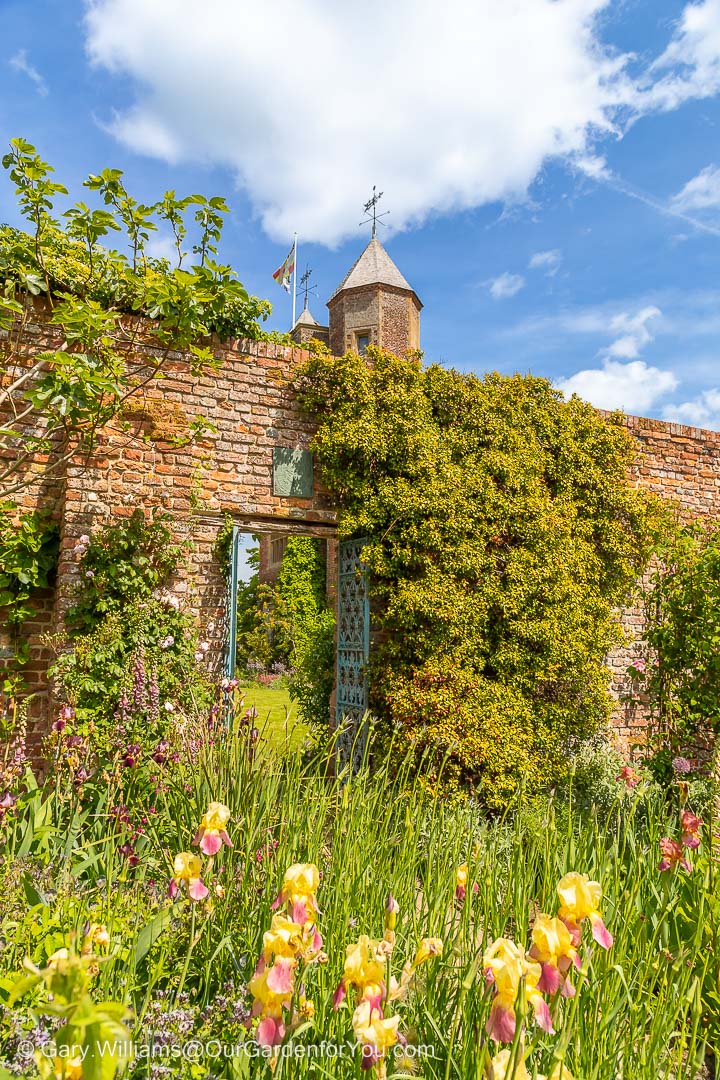
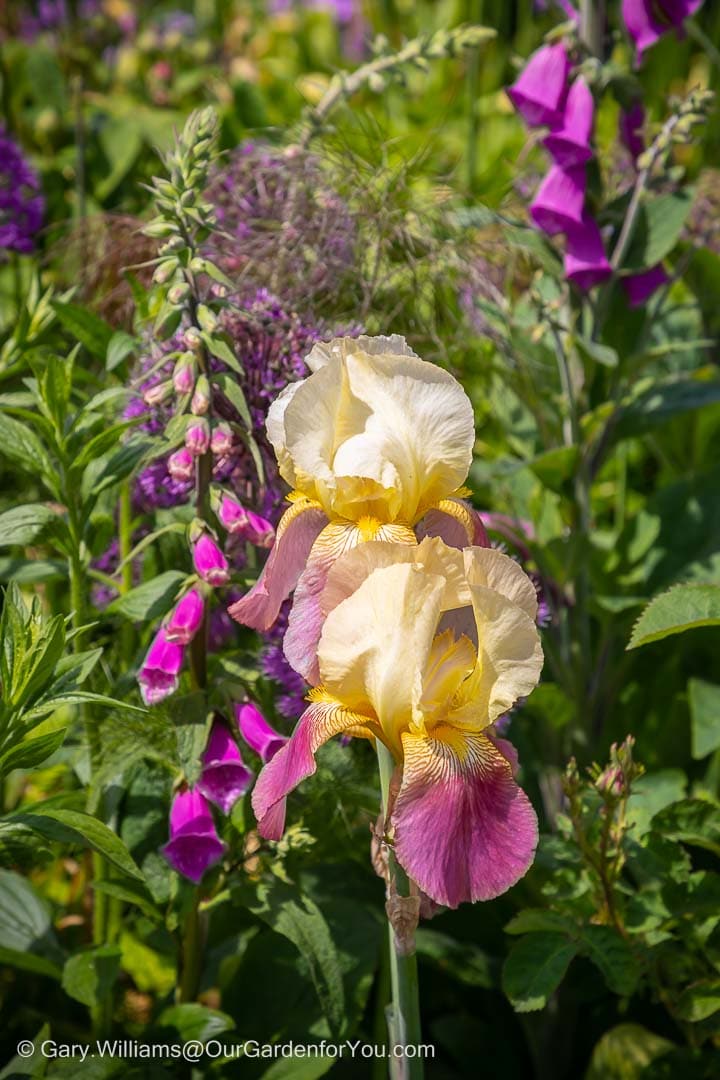
Luscious purple alliums and foxgloves standing bolt upright and exquisite bearded iris unfurling with elegance.
I could easily while away hours in the Rose Garden. I brushed past a rose which instantly caught my attention as the fragrance was hypnotising; it was a Rosa Spinosissima ‘William III’.
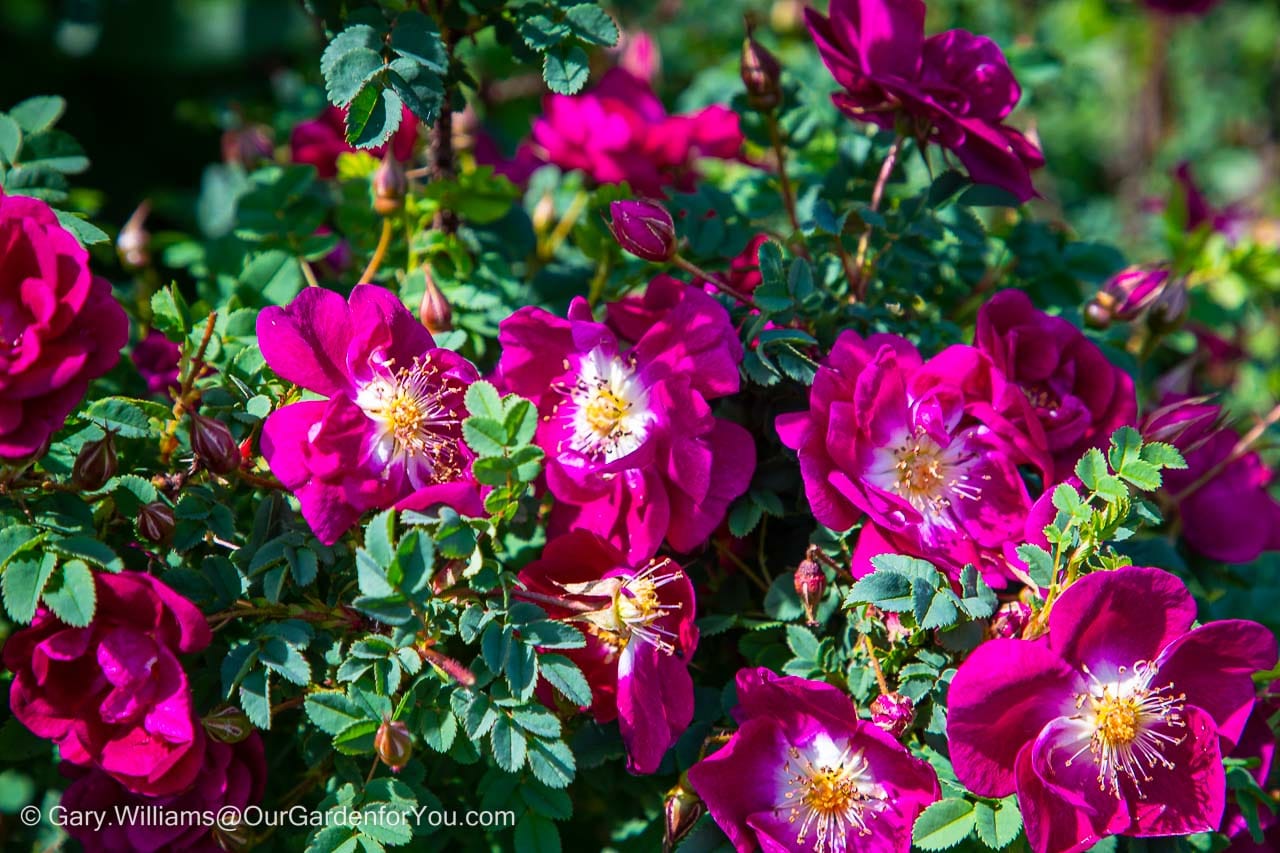
National Trust further reading
If, like us, you enjoy visiting the National Trust gardens around the United Kingdom, then grab yourself a copy of the latest ‘Gardens of the National Trust’.
It’s a beautifully illustrated book, and it won’t be long before you’re planning your next trip.
Vibrant South Cottage Garden
Sensory overloadPassing through the Lower Courtyard, we amble into the South Cottage Garden; this gorgeous oasis is stunning. You get an instant hit of vibrancy with swathes of orange, reds, yellows and vivid greens.
I was undoubtedly having cottage garden envy.
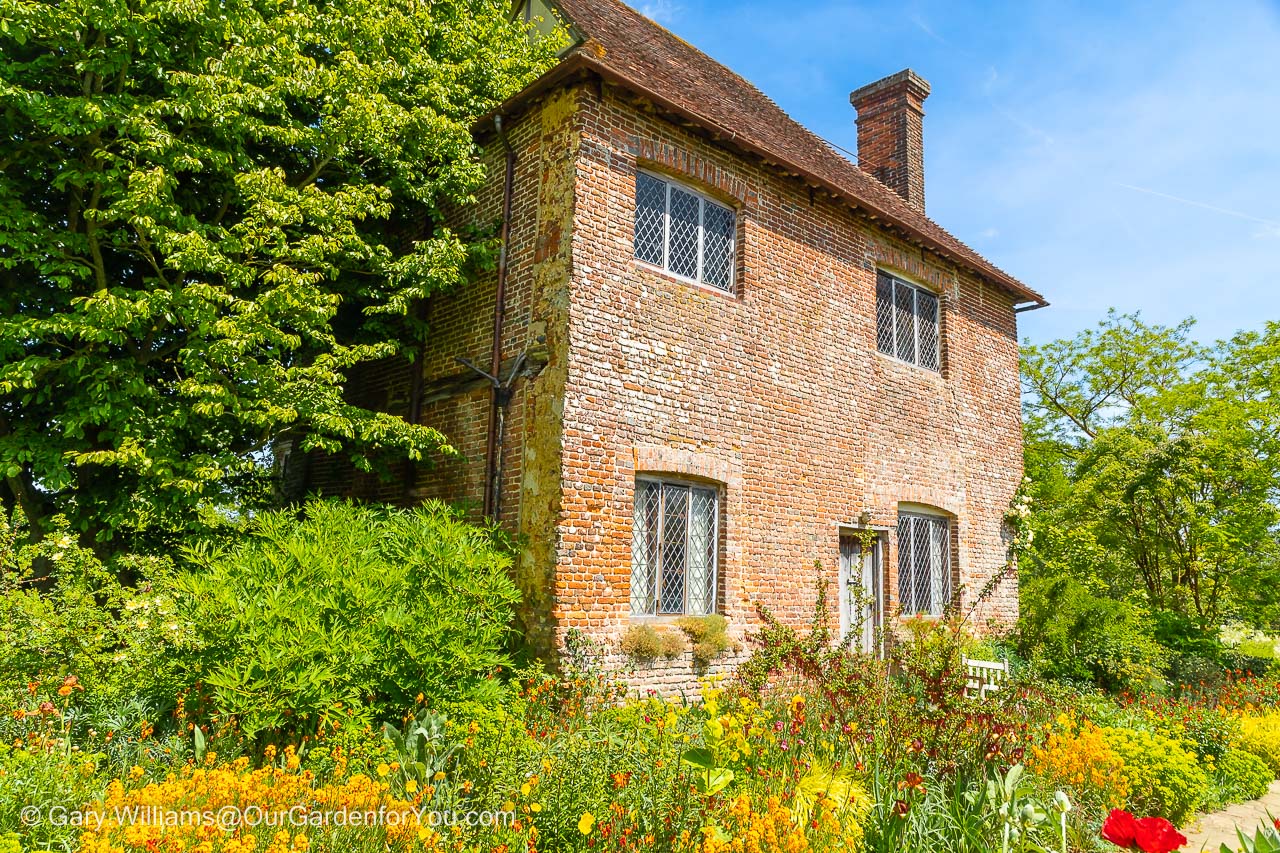
The backdrop to the cottage garden is the characterful South Cottage. The weather-worn red brick, delicate leaded windows and the exceptional planting at its feet truly gives you a heart-warming feel.
This is a perfect place to find a peaceful bench and get lost in your thoughts. All the while, bumblebees are collecting their nectar, and butterflies are busying themselves amongst the blossoms.
Discovering Moat Walk and Lime Walk
And the herb garden beyond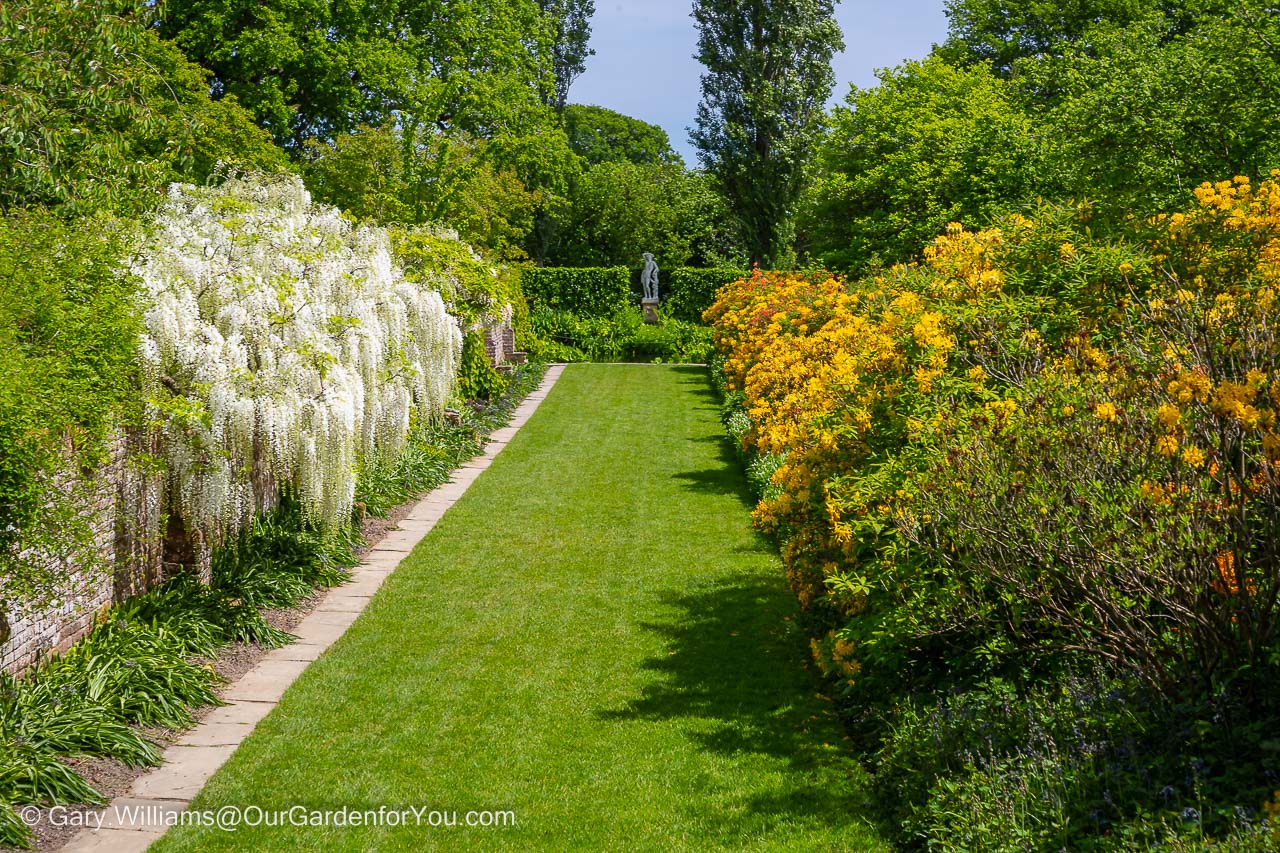
As the name would suggest, Moat Walk once formed part of the original moat surrounding the old manor. Two channels of the moat can still be seen, and it’s delightful heading off on a perimeter walk.
Nearby Moat Walk is Lime Walk and the Nuttery. Lime Walk was Harold’s pride and joy, and every spring below the line of Lime trees; the huge terracotta pots would be overflowing with tulips and fragrant hyacinths.
A short hop, and we’re in The Nuttery. This section of Sissinghurst Castle Garden is very lush and shady. Below the forest of Kentish cobnut trees is a carpet of feathery ferns.
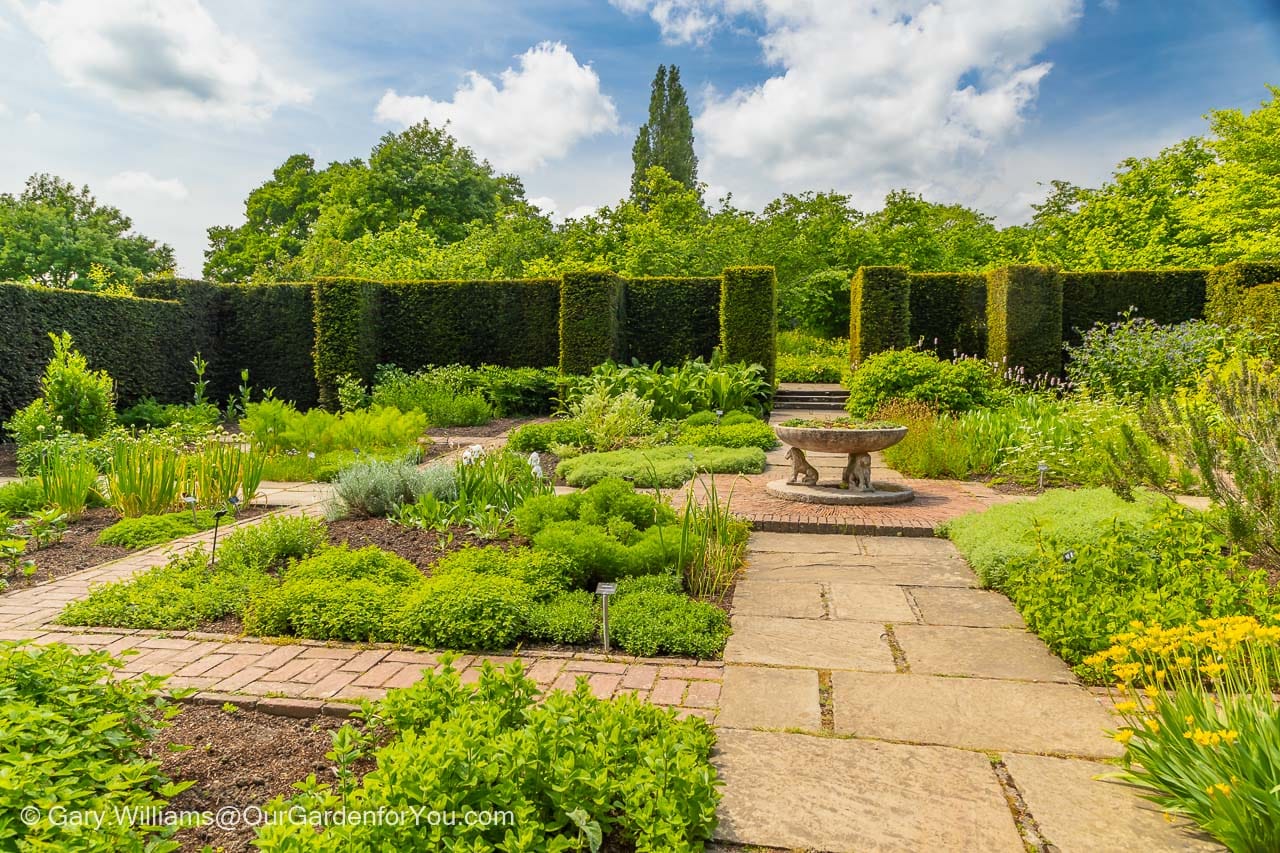
We then wend our way effortlessly to the herb garden. I think we have a long way to go before our herb garden reaches these dizzy heights.
The pleasing symmetrical layout of the herb garden is a feast for the senses. Strolling between the beds, you get a waft of captivating fragrances from the herbs below, and you immediately want to find out what it is.
The curry plant always amazes me; the exotic aroma is so strong, it’s wonderful.
Inspiration from the White Garden
Strolling the moat path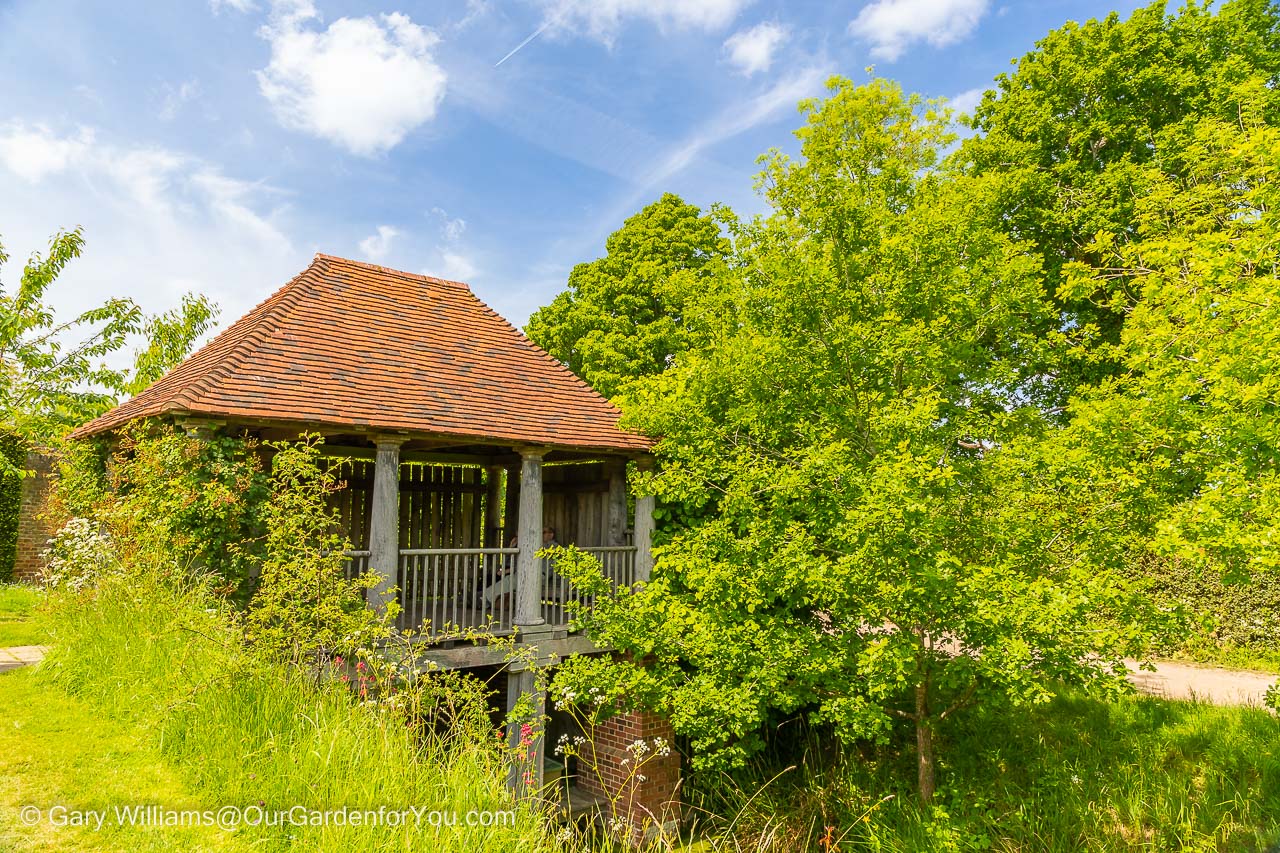
Our next garden to explore and gather more inspiration from is the White Garden.
Once again, the planting is exquisite, billowing shades of white, silver, grey and ashen blues blend so well with each other, and the vivid greens lift the contrast even more. Particularly with the manicured box hedges and the soft, delicate grasses.
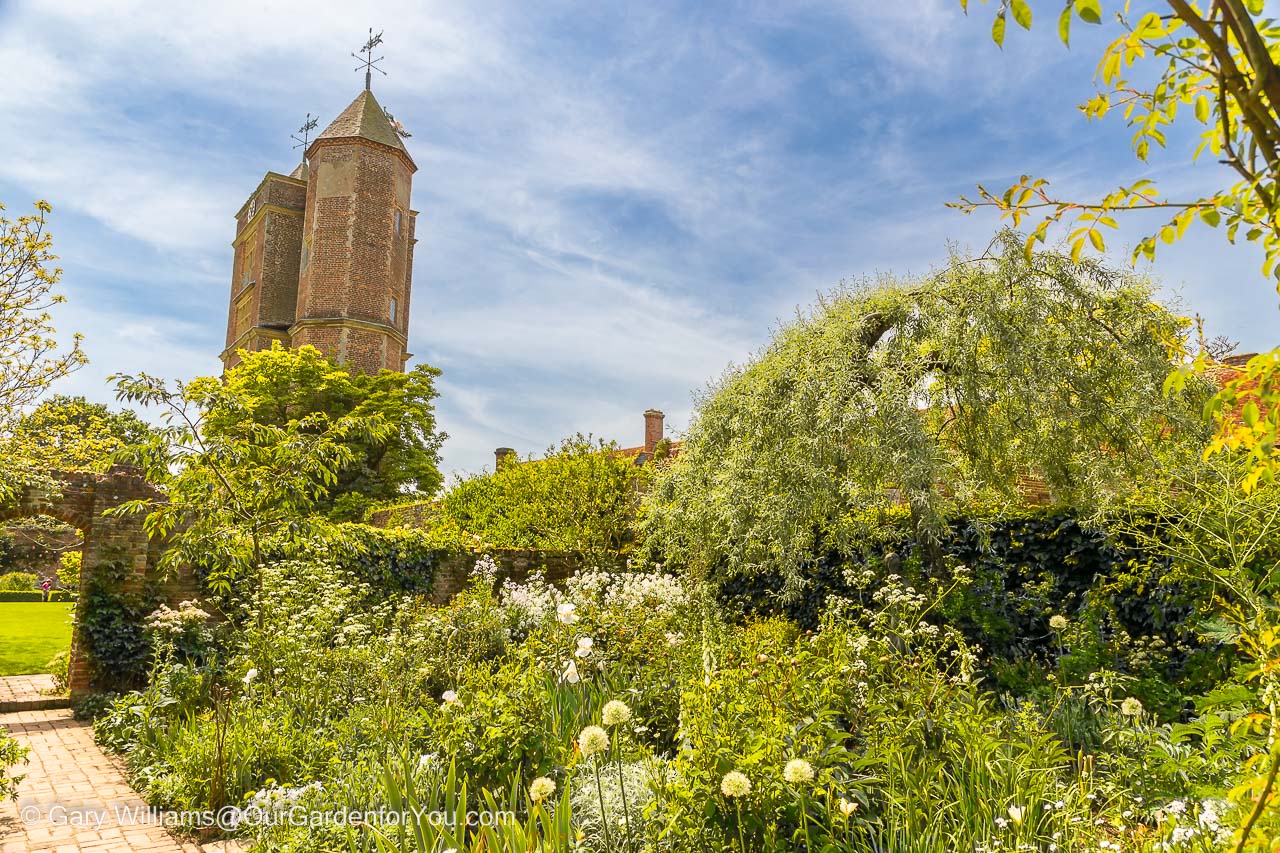
The Greek Delos Garden
A little bit of the Med' in KentLast but by no means least, we reach the Delos Garden, inspired by Vita and Harold’s visit to the Greek Island of Delos in 1935.
This sensational garden is such a credit to the National Trust as it cannot be easy emulating a Greek garden in the southeast of England. Well, actually, that was the issue that Vita and Harold experienced, and their original Greek garden wasn’t too successful.
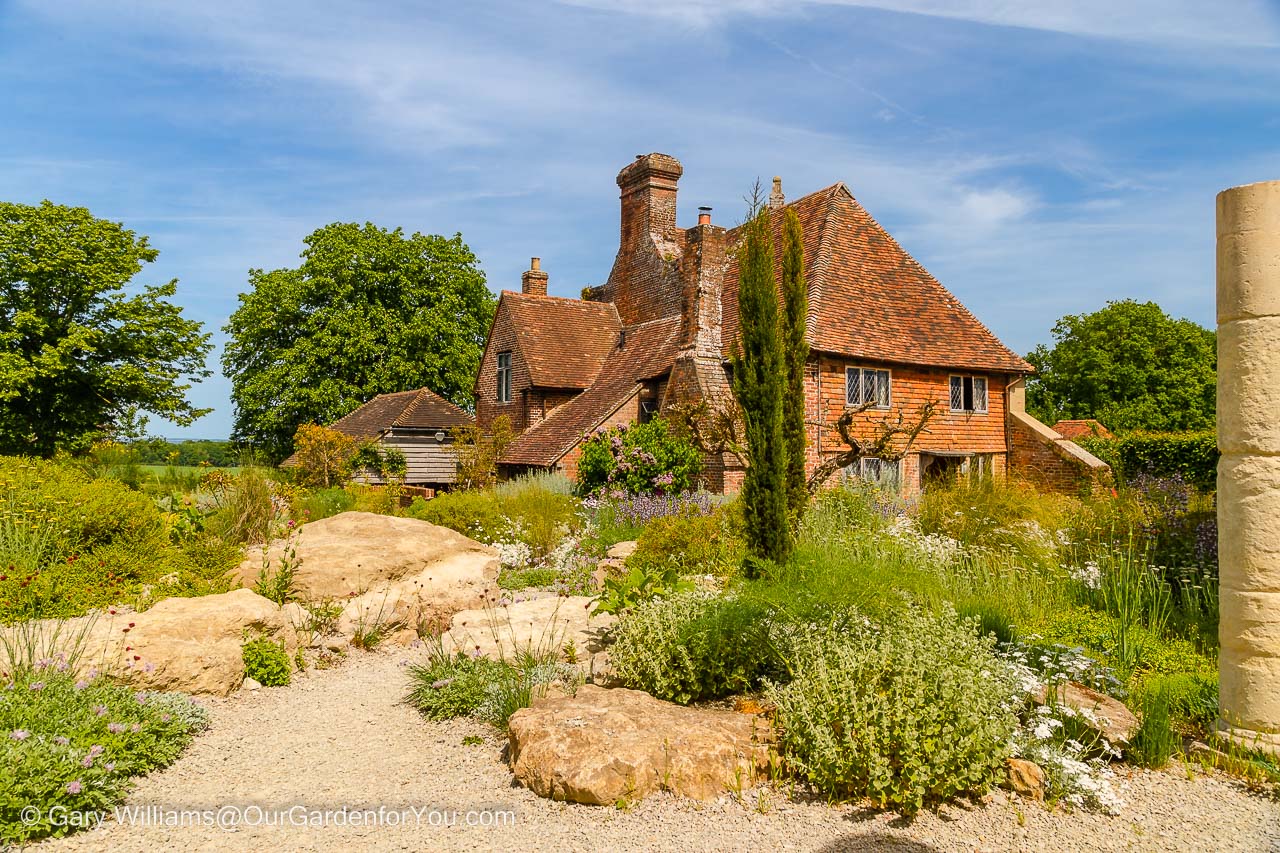
The Delos Garden is a recent addition to Sissinghurst Castle Garden; it was newly created in spring 2021. The Mediterranean planting of olive trees and soft subtle blooms blends so well with the silvery gravel at your feet and the bulky chalky boulders meticulously laid around.
You wouldn’t quite expect the tall, ruined pillars installed in the garden to combine so well with the historic Priest’s House, but they do.
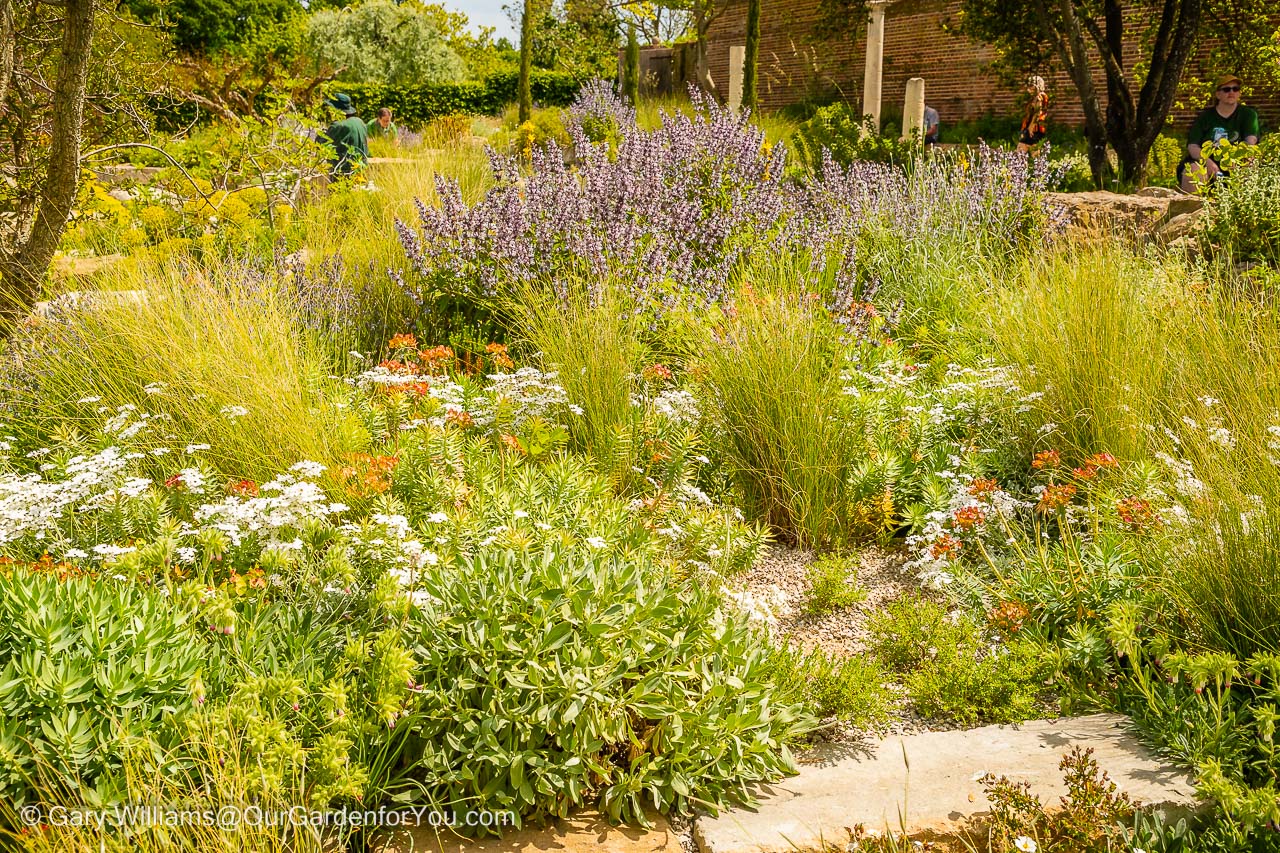
Will it be a perennial or herbs?
Pop into the Vegetable GardenIf your creative tastebuds have been whetted, then stop by the National Trust shop when you leave. They have some delightful plants and herbs, and I didn’t think the prices were too bad; the quality was excellent.
We purchased some herbs, and within a couple of days, they were flourishing. We picked up chamomile, lemon verbena, marjoram, and French tarragon. We’re now going to conjure up some tasty dishes to accompany them.
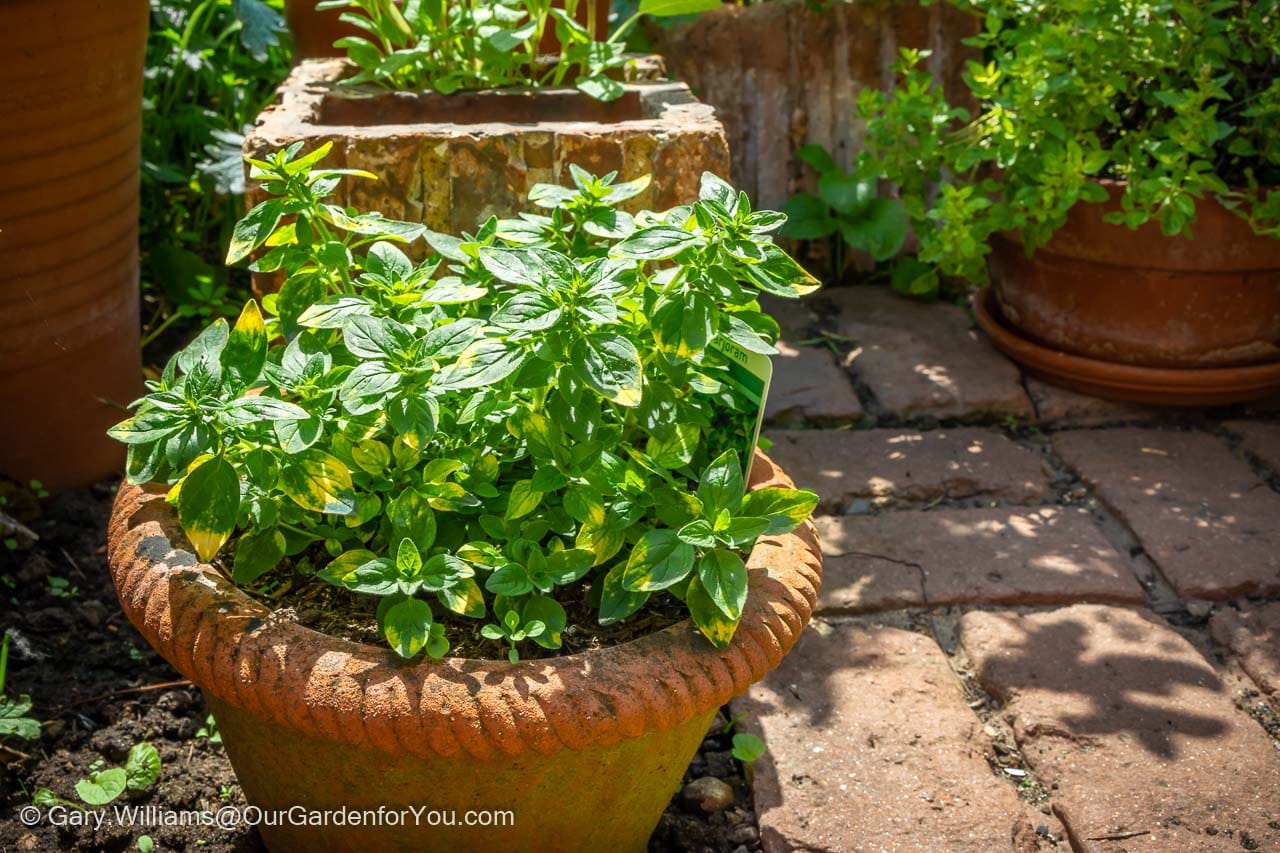
At the rear of the National Trust shop is their huge vegetable garden, it was in the early stages of this year’s crop, so we may try and head back in a couple of months.
If I had the time, I would have strolled around the whole of Sissinghurst Castle Garden again.
* This post may contain links to affiliated sites where we earn a small commission at no additional charge to you.


